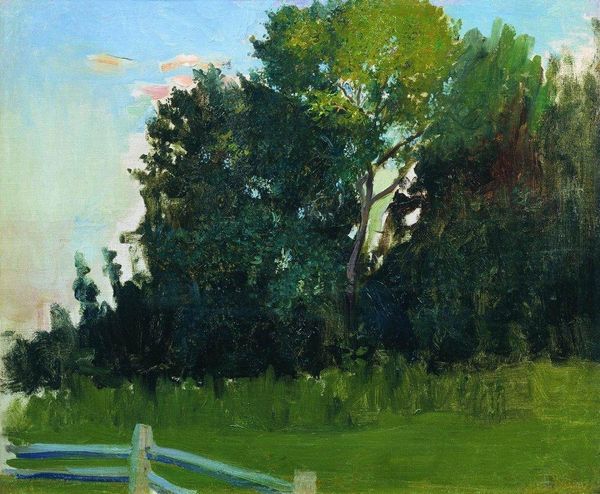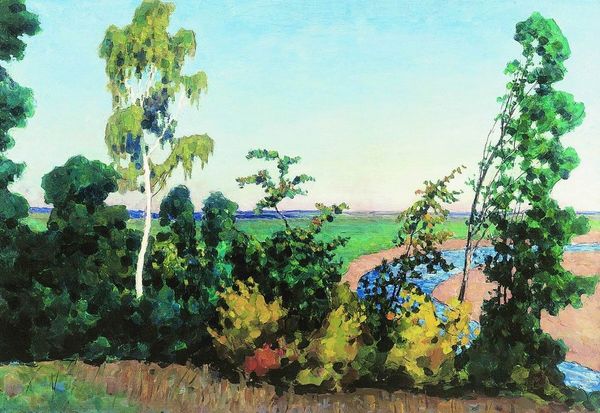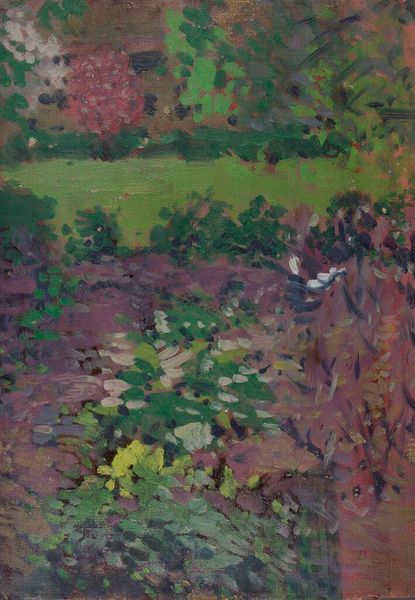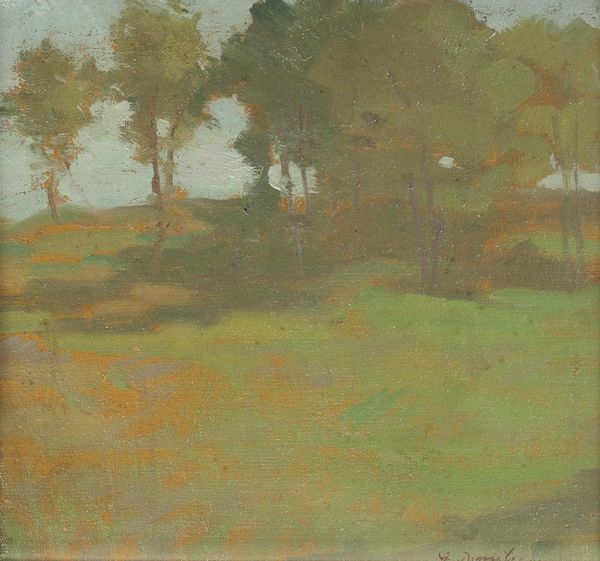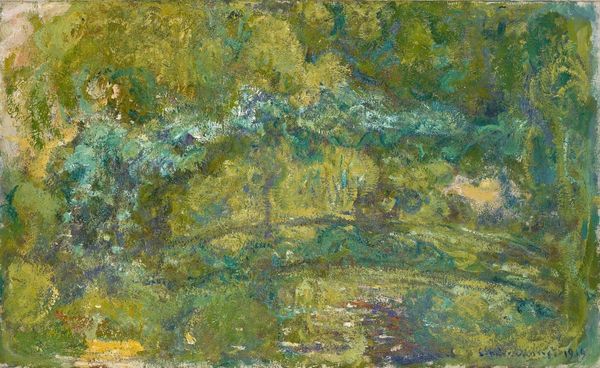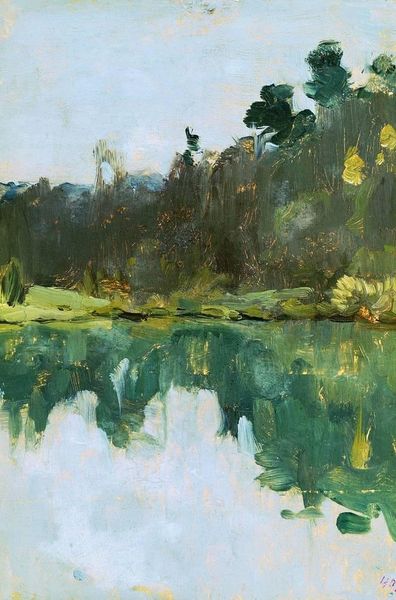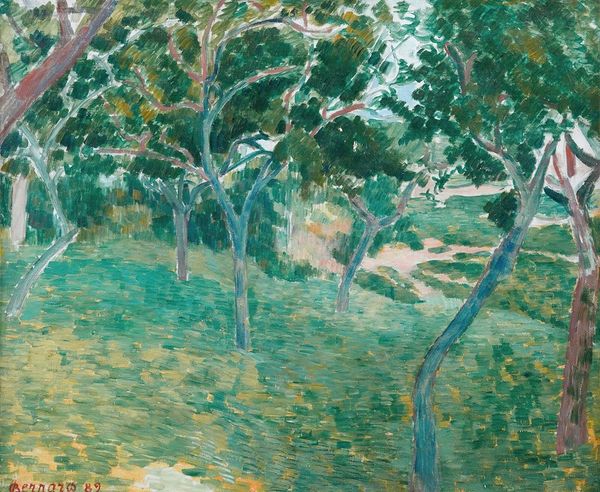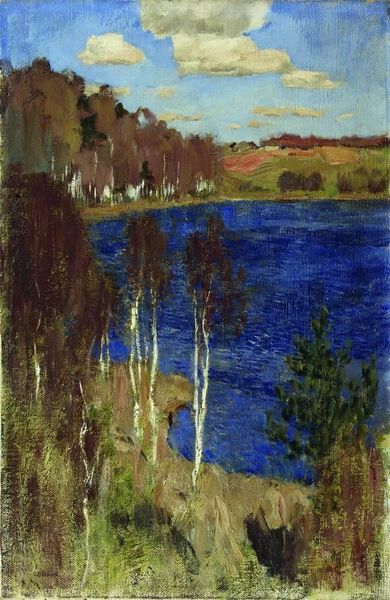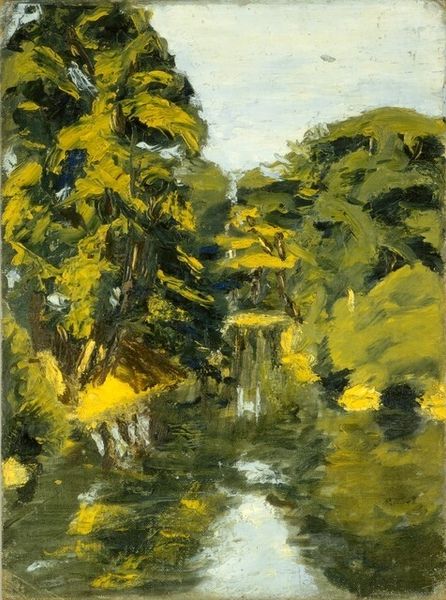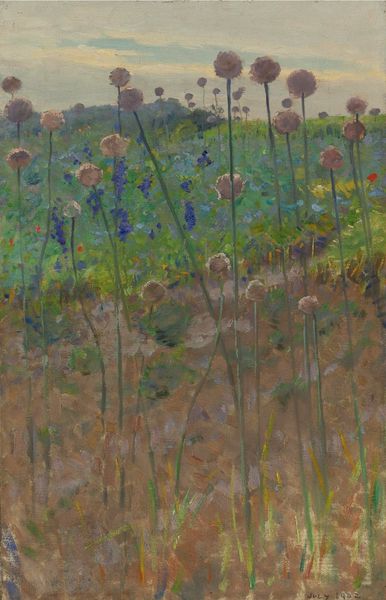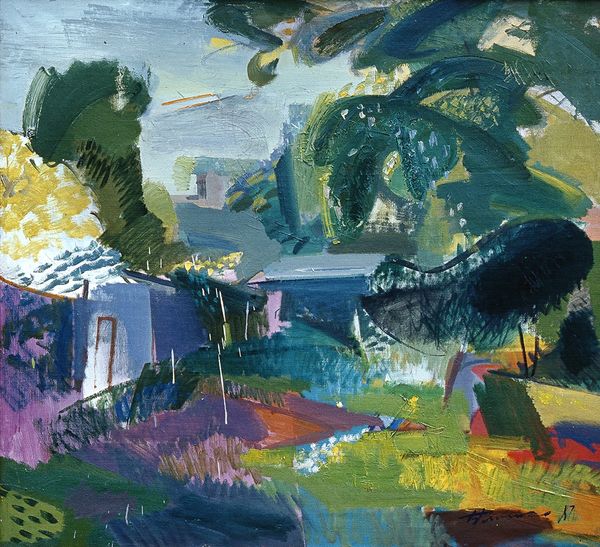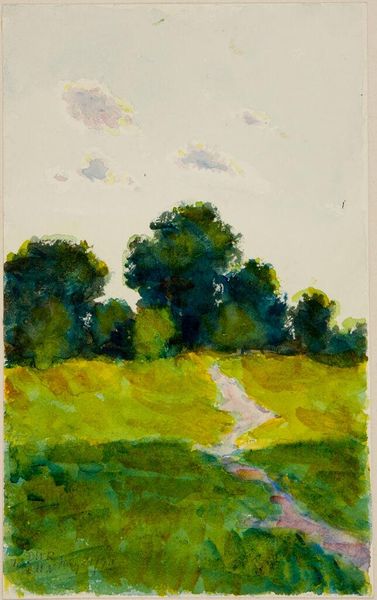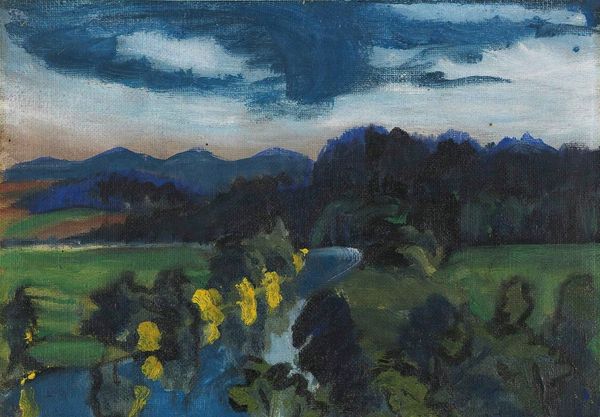
Copyright: Public domain
Editor: We're looking at "Lake. Autumn.," an oil painting by Isaac Levitan, created in 1898. There’s something very immediate and visceral about the paint application. The landscape, though recognizable, feels almost abstracted. How would you approach interpreting a work like this, focusing on its formal elements? Curator: I’d begin by examining the relationship between the blocks of colour and the handling of form. Note how the ultramarine expanse of the lake dominates the composition, creating a strong horizontal division. Levitan uses loose brushstrokes, but it's a structured composition where colour creates depth and suggests spatial relationships, not a chaotic mass. Editor: The green feels quite intense against that blue. Is that contrast significant? Curator: Precisely. Observe the chromatic tension generated between the verdant hill and the deep blue of the lake. This sharp contrast advances the implied forms forward into our space. Also, the varied texture and impasto application capture fleeting light. Levitan eschews any sharp linear distinction in favor of bold forms of contrasting hue. How might we consider the effects? Editor: It adds visual energy. The composition feels grounded, almost monumental in its simplicity, even with its smaller scale. Is it fair to interpret this form as representative of its function, which could be rooted in the traditions of Russian landscape art? Curator: Indeed. Though painted with the tools of Impressionism, the forms created show the sublime nature and Russian Realist tradition of emotional impact with a very simplified natural setting. Editor: Seeing the contrast between this work’s perceived accessibility and formal mastery provides insight into Levitan's artistic technique. Curator: Yes, and through considering it's colour relations and its relation to form it helps us to comprehend what he presents to us.
Comments
No comments
Be the first to comment and join the conversation on the ultimate creative platform.
